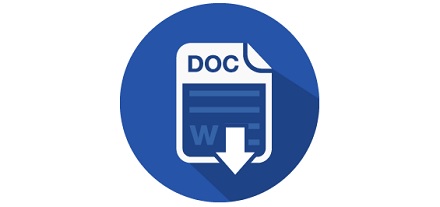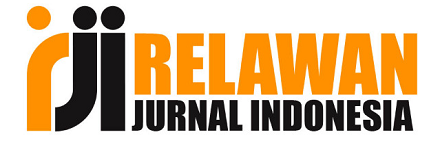PENGARUH BAURAN PEMASARAN TERHADAP KUNJUNGAN WISATAWAN DI KOTA MAKASSAR
DOI:
https://doi.org/10.33474/jimmu.v7i2.18126Abstract
Â
           Penelitian ini bertujuan untuk mengetahui pengaruh marketing mix terhadap kunjungan wisatawan di kota Makassar. Marketing mix dalam penelitian ini menggunakan 4 (empat) variabel yang terdiri atas: produk, harga, promosi, distribusi. Penelitian ini menggunakan metode deskriptif kuantitatif. Instrumen penelitian ini menggunakan angket untuk kepentingan survei. Populasi dalam penelitian ini terdiri adalah seluruh jumlah wisatawan kota Makassar. Jumlah sampel ditentukan berdasarkan teknik purposive sampling. Dalam penelitian ini jumlah sampel yang diperoleh adalah 140 wisatawan, dsn penelitian ini menggunakan SPSS. Hasil analisa menunjukkan bahwa marketing mix yang terdiri atas produk, harga, distribusi berpengaruh positif dan signifikan terhadap keputusan berkunjung. Sementara promosi tidak memiliki pengaruh positif dan signifikan terhadap kunjungan wisatawan di kota Makassar.
Kata Kunci:Â Produk; harga; promosi; distribusi; kunjungan wisatawan
Â
           This study aims to determine the effect of the marketing mix on tourist visits in the city of Makassar. The marketing mix in this study uses 4 (four) variables consisting of: product, price, promotion, distribution. This study uses a quantitative descriptive method. This research instrument uses a questionnaire for survey purposes. The population in this study consisted of the entire number of Makassar city tourists. The number of samples was determined based on purposive sampling technique. In this study, the number of samples obtained was 140 tourists, and this study used SPSS. The results of the analysis show that the marketing mix consisting of product, price, distribution has a positive and significant effect on visiting decisions. Meanwhile, promotion does not have a positive and significant effect on tourist visits in the city of Makassar.
Keywords:Â Product; price; promotion; distribution; tourist visit
References
Allan, M. and Altal, Y. (2016), “Museums and tourism: visitors motivations and emotional involvementâ€, Mediterranean Archaeology & Archaeometry, Vol. 16 No. 3, pp. 43-50.
Alvarez, C. and Fournier, S. (2016), “Consumers’ relationships with brandsâ€, Current Opinion in Psychology, Vol. 10, pp. 129-135.
Antoniou, A. (2017), “Social network profiling for cultural heritage: combining data from direct and indirect approachesâ€, Social Network Analysis and Mining, Vol. 7 No. 1, p. 39.
Assauri, Sofyan. 2011. Manajemen Produksi dan Operasi. Jakarta: FE UI.
Chen, C.M. and Lin, Y.C. (2018), “Understanding the motivation of museums, galleries and cultural exhibition visits – evidence from Taiwan internet use typesâ€, Current Issues in Tourism, Vol. 21 No. 11, pp. 1215-1220.
Constantinides, 2006. Responses to Static (Isometric) Exercise. staticeffect 251260.pdf Online (http// www. Responses to Static (Isometric) Exercise. pdf ) diakses pada 4 Desember 2010.
Dieck, M.C. and Jung, T. (2018), “A theoretical model of mobile augmented reality acceptance in urban heritage tourismâ€, Current Issues in Tourism, Vol. 21 No. 2, pp. 154-174.
Granitz, N. and Forman, H. (2015), “Building self-brand connections: Exploring brand stories through transmedia perspectiveâ€, Journal of Brand Management, Vol. 22, No. 1, pp. 38-59.
Gilovich, T., Kumar, A. and Jampol, L. (2015), “A wonderful life: Experiential consumption and the pursuit of happinessâ€, Journal of Consumer Psychology, Vol. 25 No. 1, pp. 152-165.
Hammerl, M., Dorner, F., Foscht, T. and Brandstätter, M. (2016), “Attribution of symbolic brand meaning: The interplay of consumers, brands and reference groupsâ€, Journal of Consumer Marketing, Vol. 33 No. 1, pp. 32-40
He, Z., Wu, L. and Li, X.R. (2018), “When art meets tech: the role of augmented reality in enhancing museum experiences and purchase intentionsâ€, Tourism Management, Vol. 68, pp. 127-139.
Iyer, P.P., Paswan, A.K. and Davari, A. (2016), “Brands, love and familyâ€, Journal of Product and Brand Management, Vol. 25 No. 1, pp. 69-83.
Mittal, B. (2015), “Self-concept clarity: Exploring its role in consumer behaviourâ€, Journal of Economic Psychology, Vol. 46, pp. 98-110.
Prat, F.J.M. and Canoves, V.G. (2017), “Analyze of motivation and satisfaction of the visitors to the museum of history of Gironaâ€, Pasos Revista De Turismo y Patrimonio Cultural, Vol. 15 No. 2, pp. 375-389.
Roostika,Ratna.2012.Citra Merek Tujuan Wisata dan Perilaku Wisatawan:Yogyakarta sebagai Daerah Tujuan Wisata.Jurnal Manajemen dan Akutansi.Vol.1 No.1, April 2012.
Sicilia, M., Delgado-Ballester, E. and Palazon, M. (2016), “The need to belong and self-disclosure in positive word-of-mouth behaviours: The moderating effect of self-brand connectionâ€, Journal of Consumer Behaviour, Vol. 15, No. 1, pp. 60-71.
Sim, G., Cassidy, B. and Read, J.C. (2018), “Crowdsourcing ideas for augmented reality museum experiences with childrenâ€, Museum Experience Design, Springer, Cham, pp. 75-93.
Sreejesh, S., Sarkar, A. and Roy, S. (2016), “Validating a scale to measure consumer’s luxury brand aspirationâ€, Journal of Product and Brand Management, Vol. 25 No. 2, pp. 465-478.
Ye, S., Li, J., Zeng, Z. and Hao, S. (2015), “Research on the impact of social circles on self-rand connection: Regulation of self-awareness and brand valueâ€, Open Journal of Business and Management, Vol. 3 No. 2, pp. 155-162.
Yudananto, Wisnu dkk. 2010. Peranan Sektor Pariwisata Terhadap Perekonomian Daerah Di Indonesia. (Analisis Interregional Input - Output). Jurnal Ekonomi Universitas Padjajaran, Volume











